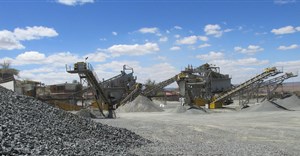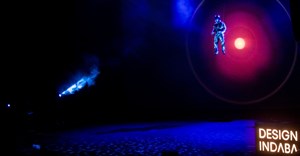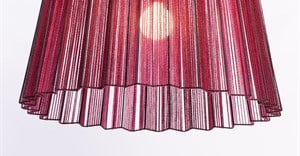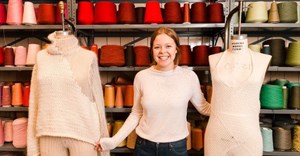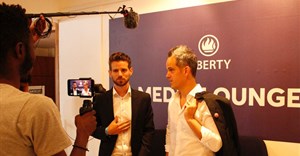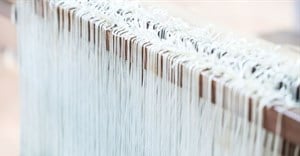Trending
#DesignIndaba2018: Seeing the world through a grain of sand
It soon made sense. She loves to stand in the dirt, she said, and remembers a time in 2003 when she was dancing on clay, pressing out the air bubbles, and in the morning, travelling by horse wagon to collect the clay. “I was working with local artisans in Peru and I saw the whole process from digging the clay to making the vase, and this was a really beautiful moment because I had the feeling I was seeing clay for the first time. I had bought it in the shop to make things, but this time it was really different because I could feel its structure and it made me really happy.”
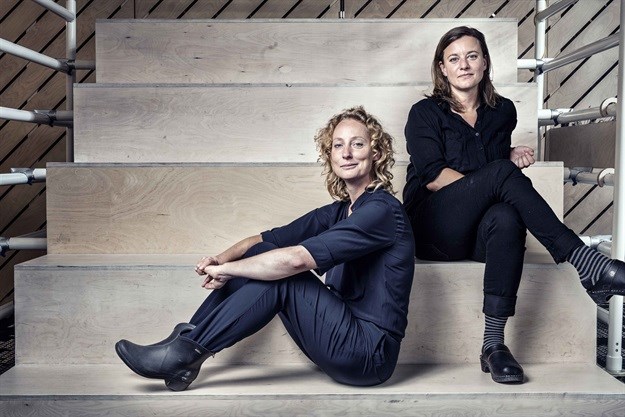
After graduating from Design Academy Eindhoven, Van Ryswyck and Nadine Sterk, who have since partnered to establish Atelier NL, went to Brazil together to work in the slums. They noticed that the locals were collecting plastic bottles and so they found a way to use them in their work. Working in a woodwork shop, they were able to use them to make wooden vases that could contain water. That’s when they realised they made a good team. “I was mobilising all the people to collaborate and bring the bottles to the workplace and she was figuring out how to make a vase.”
On their return, their teacher advised them to stay in Holland and they thought they would explore for themselves what the land has to offer. So they decided to go digging for clay. “In the beginning I didn’t really know how to find clay, to the point that we became experts and I fell in love with the land again.” When they opened the kiln, they discovered that the clays they had found had beautiful colours, from a dark brown to iron red and chalk yellow, unique to the place that the clay came from.
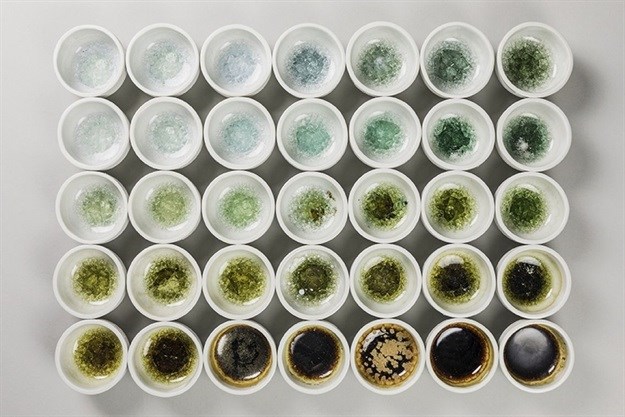
After graduating, they were invited to do a project in the Noordoostpolder region. So they went out to meet the farmers, and although they had planned to be there for six weeks, they ended up staying for two years, digging clay, riding on tractors, seeing the crops grow...
I learned that that there’s a moment for everything. First we have to seed, then we have to grow and develop and then we can harvest. In our society, we want results immediately, but we believed that we needed time to develop this project.They also worked with Australian photographer Paul Scala who took portraits of the farmers. “For us it was important to give a face to this clay, because polder clay was anonymous at the time, but when you have the farmer’s picture, one who works the land and knows everything about the land, the earth gets an identity… If you say, 'this bucket of clay is from farmer Ben and he is growing leeks', and another bucket is from farmer Johnson and he is growing potatoes, all of a sudden, these buckets of clay have a value.”
Back at the studio, they transferred the clay from the region onto a map. They made 2,000 tiles and each one provided visual information of the soil and allowed them to understand what makes them unique.

From this clay, they produced 'Polderceramics', which were exhibited all over the world. This collection marked a harvest time for Atelier NL, and they felt the need to thank the farmers, so they organised a meal and asked all the farmers to bring earth to the table. “It was a beautiful day, the sun was shining and we brought the plates made from earth, and one of farmers came to me and said, ‘I have to say something to you. I’m very happy with your project. It makes me very proud of my land and it has only been 40 years, but I feel like I have a history’. He said, ‘When you first entered my field, I thought, gosh, you cannot make anything out of clay for ceramics out of my field, I’m harvesting potatoes, but if my harvest is ruined, I can always harvest ceramic.’ That was such a big compliment because that’s what we as designers can do, we can help people who are looking at the same fields every day, look at them in a different way.”
They began producing more of these ceramics in their factory that had previously been a church. Renting the space at the time, about two years ago they were told that they would need to leave as the owners had other plans, but as they had built their community there, they refused to leave and went out to their neighbours who believed in their work for support. So they put a portfolio together and went to the bank to apply for a mortgage. Rejected, on a rainy day with their feet quite literally in the mud, they picked up their chins and said, "OK, we don’t have any money, but we do have buckets of clay in our basement and a whole community behind us.” So they went back and asked their neighbours to help them fundraise by making small tiles, and in three weeks they made 3,000 tiles from different places in Europe to sell. “It’s really crazy to tell you that in one week we raised €80,000 and we went back to the bank with a suitcase full of dirt and we showed the social value of this place and they gave us a mortgage.”
Van Ryswyck and Sterk have actually followed the Roman trade, understanding the different minerals and sizes and where they come from.
Every grain of sand had a story to tell, and you have many different sands, like limestone sands, organic sands, big sands, and we are amazed that the industry is only using white sands to produce all the glass all over the world. We are over-mining, we are exhausting these mines, so there will be a point at which we won’t have these sands anymore.So, they started exploring their own recipes to make glass from wild sands. They had to buy their own kiln and did over 2,000 tests, which revealed different colours and materials. “For us, it’s really important to document our work, so when we go somewhere, we not only collect sand, but also the stones and the twigs and the shells.” It took some time, but they eventually found a recipe that worked. From every vessel, they’ve stamped the location of where it comes from. This one is from the north of Holland…
Their latest project is called ‘To see the world in a grain of sand’. They wanted to share their fascination and had the opportunity to do so as ambassadors of last years’ Dutch Design Week, by asking delegates to send their sand to them. “We didn’t know how it would work, but since August, people were sending their sand, their stories and pictures, and in the end over 400 people collaborated and sent us sands. But what I think is really beautiful is that once people fill their bottles of sand, they contain memory, they become a celebration and they understand the value of our work with sand.” Bringing this project to South Africa, they actually created this year’s Design Indaba speaker gifts from sand taken from Theewaterskloof Dam in light of the water crisis in Cape Town.
Sometimes people ask, 'can’t we just send the sand to you? Why can’t we just take sand from the beach and send it?' The answer is that because sand is a very valuable material, without sand we would not have buildings, glass or smartphones. And that brings us to Michael Welland, author of Sand: A Journey Through Science and the Imagination, who taught the duo a lot about the importance of sand.
Together with Welland (who actually died a week before), they organised a symposium called 'The Abundance and Scarcity of Sand' in October last year.
In one way, we have access to a lot and on the other hand we have scarcity, and I think that if we can find that balance, then this is a way towards change.On her visit to South Africa for the Design Indaba Festival, Van Ryswyck went to Camps Bay and, of course, filled her hands with sand. “When I take sand in my hand, I always wonder where it comes from, brought by rivers and sea, and just like grains of sand, we all came here together, we all have our own backgrounds and rivers and if we understand our qualities, together we can make beautiful colours.”
To join this conversation, go to AtelierNL.com, follow them on Facebook, Vimeo, Instagram and Pinterest. Also keep an eye on our Design Indaba special section for our coverage throughout the Festival, which will all be packed in our Design Indaba newsletter, so also look out for that on Monday.














